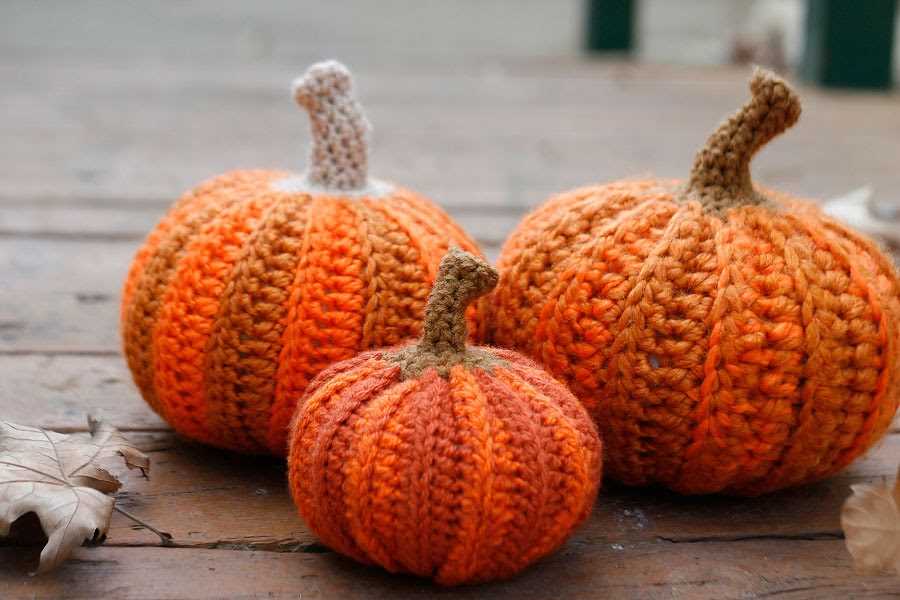
Halloween is just around the corner, and what better way to celebrate the season than with some festive knitted pumpkin dishcloths? These cute and functional cloths are perfect for adding a touch of autumn charm to your kitchen, or for giving as a thoughtful handmade gift.
Whether you’re a beginner knitter or have years of experience, there’s a pumpkin dishcloth pattern out there that’s just right for you. From simple garter stitch designs to more intricate lace patterns, there’s something for everyone. And best of all, these patterns are all free!
If you’re looking for a quick and easy project, try a basic pumpkin dishcloth pattern. These patterns usually require just a few basic stitches, such as knit and purl, and can be completed in just a couple of hours. They’re perfect for beginners or anyone looking for a relaxing knitting project. Plus, the finished dishcloths are sure to brighten up your kitchen and bring a smile to your face every time you use them.
The History of Knitted Dishcloths
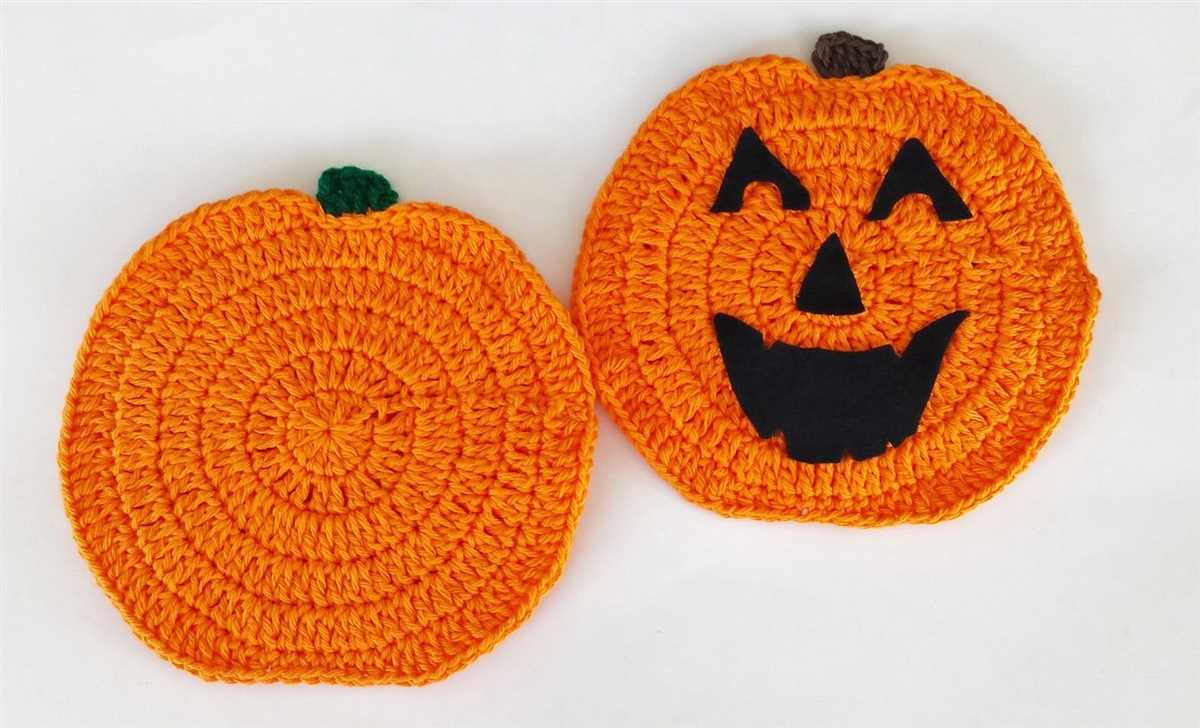
Kitchen dishcloths are a staple in many households, used for a variety of cleaning tasks such as wiping down counters, washing dishes, and scrubbing pots and pans. While dishcloths today are often made of cotton or other synthetic materials, knitted dishcloths have a rich history that dates back centuries.
The art of knitting has been practiced for thousands of years, with evidence of knitted textiles dating back to ancient Egypt and Peru. However, it wasn’t until the 17th century that knitted dishcloths specifically began to emerge. In that time, knitting patterns and techniques were passed down through generations, often among women in rural areas who valued frugality and resourcefulness.
Knitted dishcloths were initially made using natural materials such as wool or linen yarn, as these fibers were readily available and durable. They were often knit in simple patterns, featuring basic stitches like garter stitch or seed stitch. These dishcloths were cherished for their absorbency and ability to scrub away dirt and grime without scratching delicate surfaces.
As time went on, knitted dishcloths became not only practical items for the kitchen but also a way for knitters to showcase their creativity and skill. Different stitch patterns were incorporated, such as lace or cable designs, adding a touch of beauty to the humble dishcloth. Patterns were often passed down within families or shared among knitting communities, resulting in a rich tradition of dishcloth knitting.
Today, knitted dishcloths continue to be a popular project for knitters of all skill levels. With the availability of a wide range of yarns and patterns, knitters can create dishcloths that reflect their personal style and preferences. Whether made as a functional item or as a decorative piece, knitted dishcloths are a testament to the enduring nature of the craft and its ability to evolve and adapt to changing times.
Why choose knitted dishcloths over other materials?
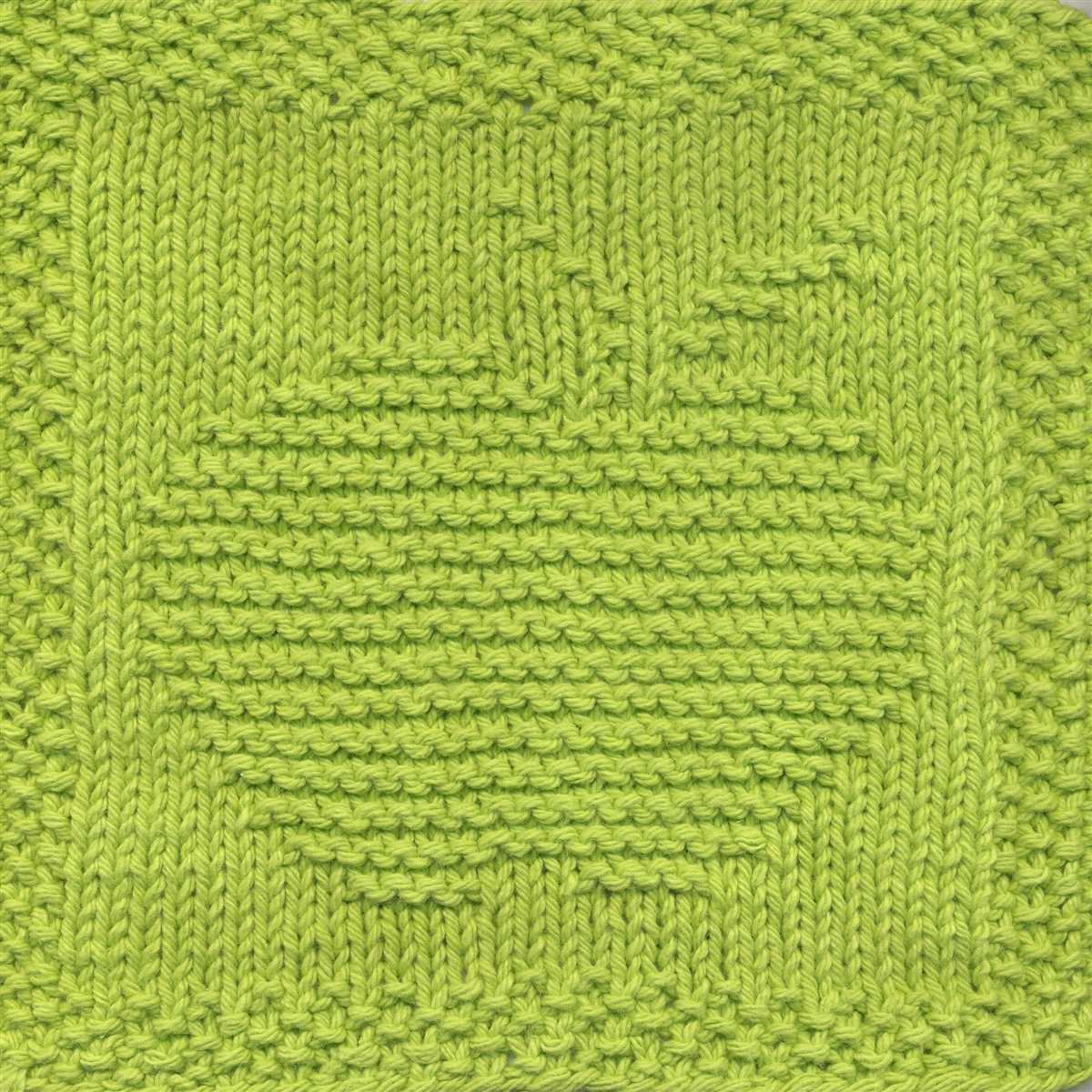
When it comes to dishcloths, there are many different materials to choose from, including cotton, microfiber, and nylon. However, one option that stands out is knitted dishcloths. These dishcloths are made by hand using knitting needles and yarn, resulting in a soft and durable fabric that is perfect for cleaning dishes.
One of the main advantages of knitted dishcloths is their versatility. Because they are made from yarn, they can easily be customized to any size or shape. This means that you can create dishcloths that are the perfect fit for your specific needs. Whether you prefer smaller dishcloths for quick clean-ups or larger ones for tackling tougher messes, you can easily knit dishcloths to suit your preferences.
Easy to care for
Knitted dishcloths are also easy to care for, making them a practical choice for everyday use. They can be machine washed and dried, saving you time and effort in cleaning. Additionally, the texture of the knitted fabric helps to effectively remove dirt and grime from dishes, making them more hygienic than other types of dishcloths.
Durable and eco-friendly
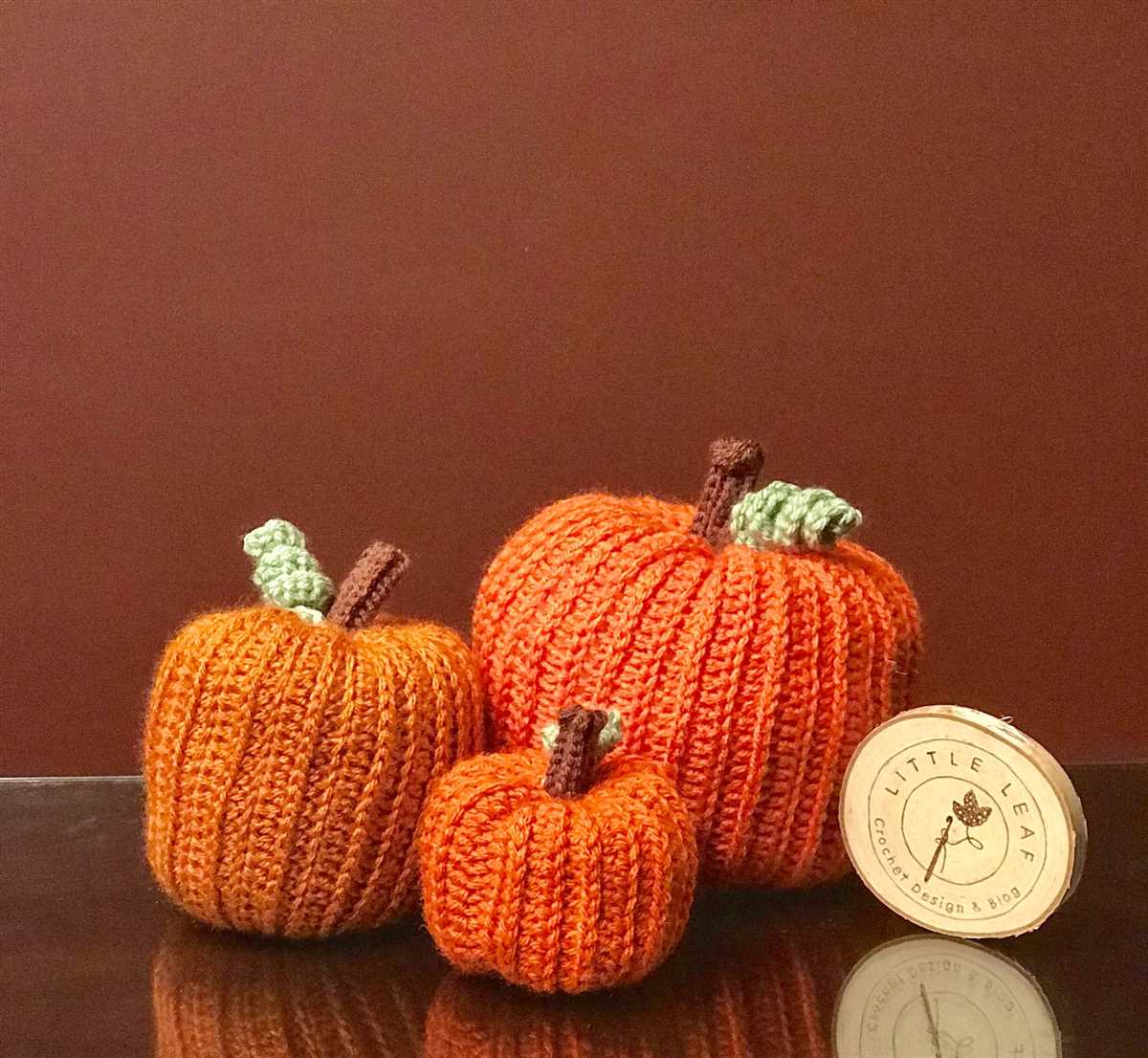
Another reason to choose knitted dishcloths over other materials is their durability. The tight stitches and sturdy nature of knitted fabric make these dishcloths long-lasting, allowing you to get plenty of use out of them before needing to replace them. In addition, knitting your own dishcloths is an environmentally friendly option, as it reduces waste by reusing materials and eliminates the need for disposable paper towels or synthetic sponges.
Stylish and unique
Lastly, knitted dishcloths offer a stylish and unique alternative to traditional dishcloths. With a wide variety of patterns and colors available, you can easily add a touch of personality and style to your kitchen. Whether you prefer simple stripes or intricate lace designs, knitted dishcloths allow you to showcase your knitting skills and create one-of-a-kind pieces that are both functional and aesthetically pleasing.
In conclusion, knitted dishcloths offer a range of benefits that make them a great choice for cleaning dishes. Their versatility, ease of care, durability, and unique style are just a few of the reasons why many people prefer knitted dishcloths over other materials.
The Benefits of Using Knitted Dishcloths
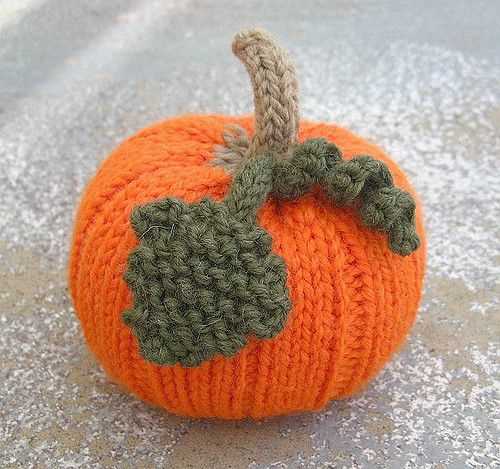
Knitted dishcloths are not just aesthetically pleasing but also offer numerous benefits that make them a popular choice in many households. Here are some of the advantages of using knitted dishcloths:
Durable and Long-lasting
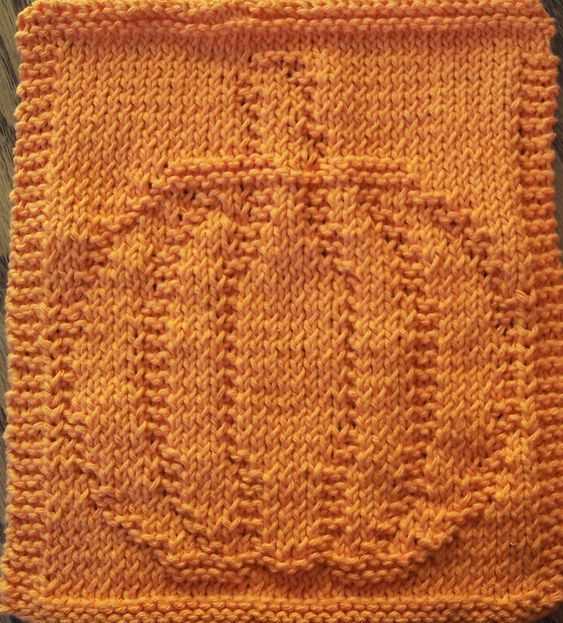
Knitted dishcloths are typically made from high-quality yarn that is known for its durability. Unlike disposable or cheaply made dishcloths, knitted dishcloths can withstand frequent use and washing without losing their shape or effectiveness. This long-lasting nature makes them a cost-effective option in the long run.
Effective Cleaning
The texture of knitted dishcloths allows for better scrubbing and cleaning power. The raised knit stitches create friction, making it easier to remove tough stains and residues from dishes, countertops, and other surfaces. The gentle abrasive quality of the knitted material ensures efficient cleaning without causing scratches or damage.
Reusable and Eco-friendly
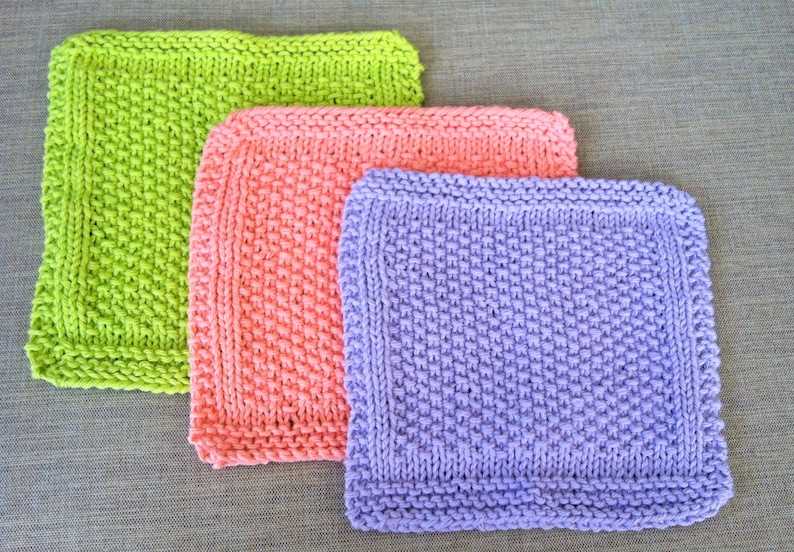
Knitted dishcloths are reusable, unlike disposable sponges or wipes. This not only reduces waste but also helps to minimize the environmental impact. By choosing knitted dishcloths over disposable options, you can contribute to a more sustainable lifestyle by reducing the amount of single-use plastic and paper products that end up in landfills.
Versatile and Multi-functional
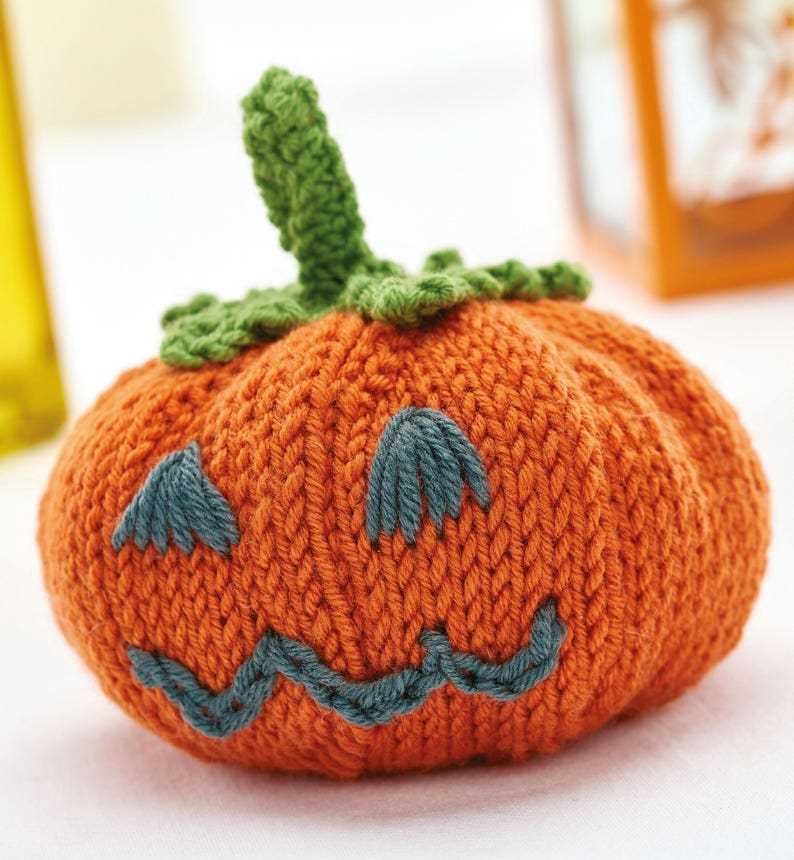
Knitted dishcloths can be used for various purposes beyond just dishwashing. They can serve as pot holders, trivets, or even as gentle exfoliating washcloths for the skin. Their versatility makes them a versatile tool in the kitchen and throughout the home.
Easy to Clean and Maintain
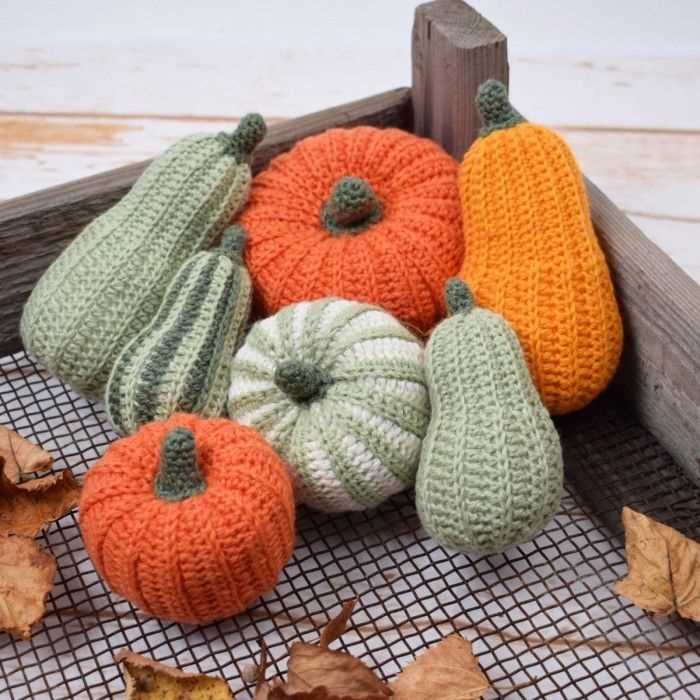
Keeping knitted dishcloths clean is a straightforward process. They can be easily washed by hand or in the washing machine, and they dry quickly due to their knit structure. Regular cleaning and proper maintenance extend their lifespan and keep them hygienic for use.
In conclusion, knitted dishcloths offer many advantages, including durability, effective cleaning power, reusability, versatility, and easy maintenance. By incorporating knitted dishcloths into your daily routine, you can enjoy the benefits of a sustainable, functional, and aesthetically pleasing kitchen accessory.
Environmental benefits
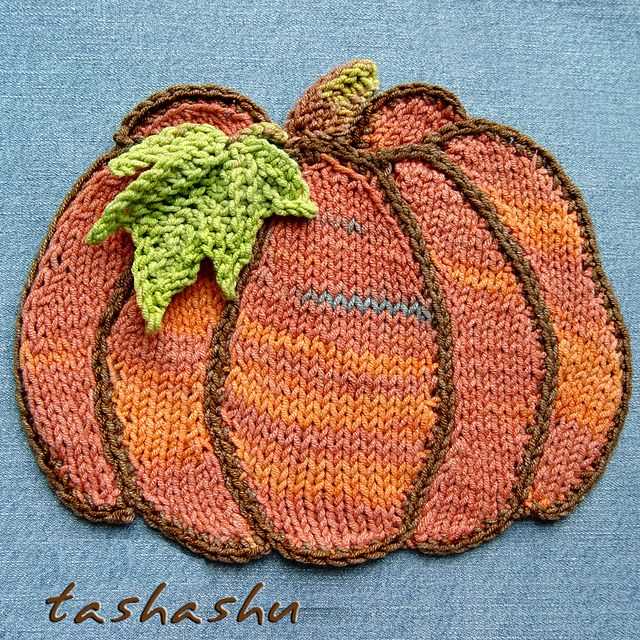
Using knitted pumpkin dishcloths can have several environmental benefits. Firstly, these dishcloths are typically made from sustainable and renewable materials such as cotton or hemp. These materials are biodegradable, meaning that they will naturally break down over time and not contribute to landfill waste. By using knitted pumpkin dishcloths instead of disposable sponges or paper towels, you can reduce your household’s overall waste production.
Additionally, knitted dishcloths can be reused multiple times before needing to be washed. This means that you can reduce the amount of water and energy used to clean dishes, compared to using disposable options that are thrown away after one use. By incorporating knitted pumpkin dishcloths into your cleaning routine, you can minimize your water and energy consumption, leading to a more sustainable lifestyle.
Benefits of using knitted pumpkin dishcloths:
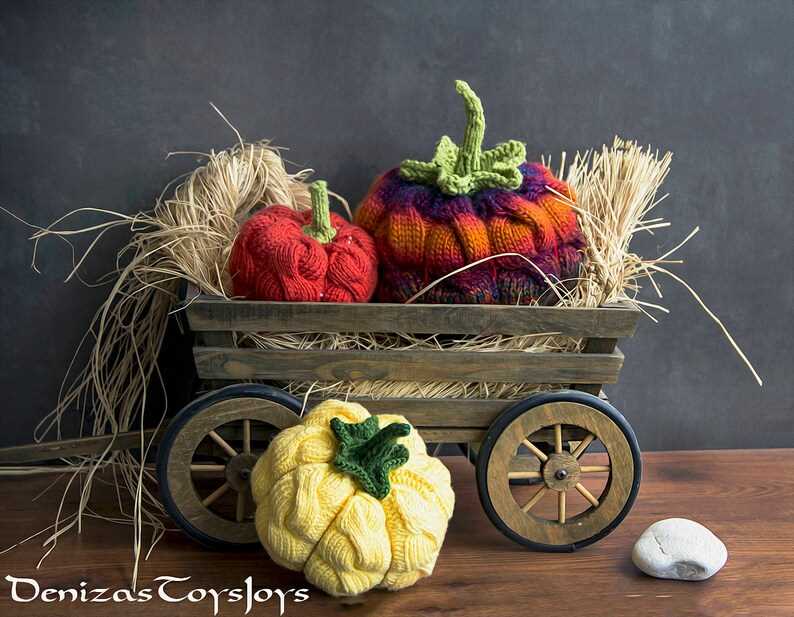
- They are made from sustainable and renewable materials.
- They are biodegradable and do not contribute to landfill waste.
- They can be reused multiple times before needing to be washed.
- They help reduce water and energy consumption in dishwashing.
- They promote a more sustainable lifestyle.
Hygiene Benefits
Using knitted pumpkin dishcloths in your kitchen provides various hygiene benefits that are essential for maintaining a clean and healthy environment. These unique dishcloths are designed to effectively remove dirt, grime, and bacteria from dishes, utensils, and kitchen surfaces.
The texture of knitted pumpkin dishcloths allows for better scrubbing and cleaning action, ensuring that all traces of food particles and stains are removed. This helps to prevent the growth of bacteria and other pathogens that can cause foodborne illnesses. Additionally, the raised ridges and patterns on the dishcloths help to increase the surface area, allowing for more thorough and efficient cleaning.
Knitted dishcloths are also highly absorbent, meaning they can effectively soak up excess moisture and spills from your kitchen surfaces. This helps to prevent the growth of mold and mildew, which can pose health risks and cause unpleasant odors. Regularly using knitted pumpkin dishcloths to clean your kitchen can help to maintain a hygienic environment and reduce the risk of cross-contamination.
Furthermore, these dishcloths are reusable and can be easily washed to ensure optimal hygiene. Unlike disposable paper towels or sponges, knitted dishcloths can be machine washed and dried, allowing for thorough cleaning and sanitization. By regularly cleaning and replacing your knitted pumpkin dishcloths, you can ensure that they remain effective in preventing the spread of germs and maintaining a hygienic kitchen.
Durability benefits
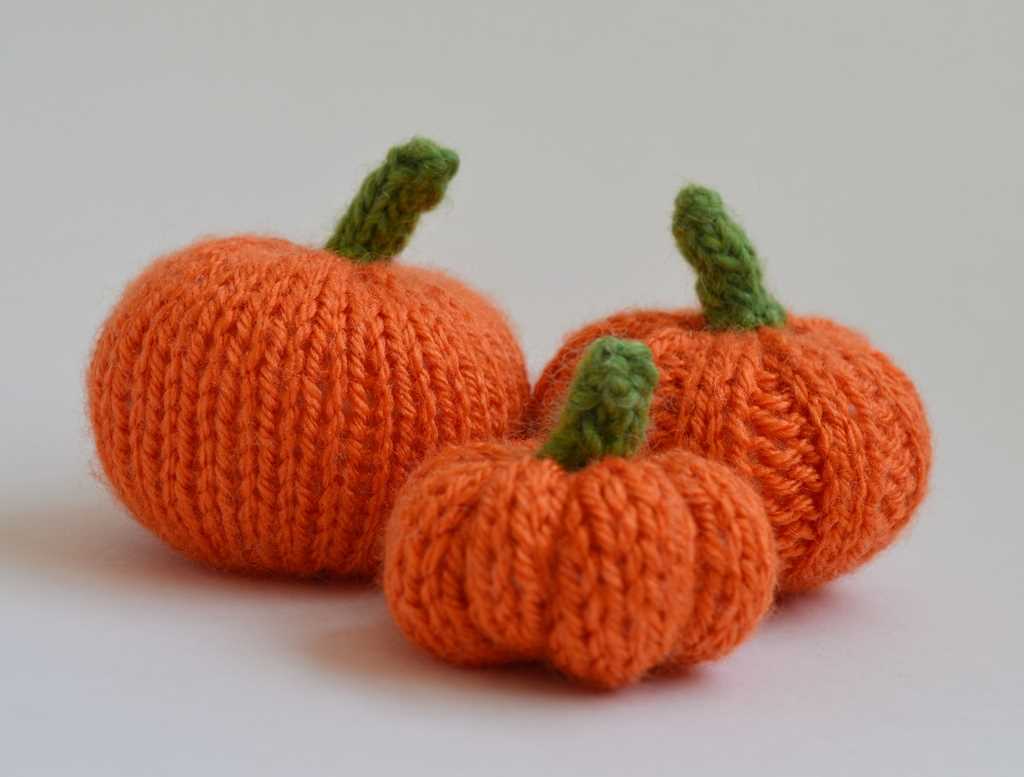
When it comes to dishcloths, durability is an important factor to consider. With the free knitted pumpkin dishcloth patterns, you can rest assured that you are creating a long-lasting and durable item for your kitchen.
One of the main durability benefits of these dishcloths is the type of yarn used. The patterns typically recommend using cotton yarn, which is known for its strength and durability. Cotton is a natural fiber that can withstand regular use and frequent washing without losing its shape or color. It is also highly absorbent, making it ideal for cleaning and drying dishes.
In addition to the choice of yarn, the knitting technique itself contributes to the durability of these dishcloths. The patterns often include textured stitches and patterns that create a thicker fabric, making the dishcloth more resistant to wear and tear. The knitted fabric also provides a gentle exfoliating effect, making it perfect for scrubbing stubborn stains and food residue.
The durability of these dishcloths not only ensures that they will last for a long time but also makes them an eco-friendly choice. By using reusable and durable dishcloths, you can reduce your consumption of disposable alternatives, such as paper towels, which contribute to landfill and waste.
- Using cotton yarn ensures strength and durability.
- Knitted texture and thicker fabric provide resistance to wear and tear.
- Knitted fabric offers a gentle exfoliating effect.
- Reusable dishcloths are an eco-friendly alternative to disposable options.
What are pumpkin dishcloths?
Pumpkin dishcloths are knitted or crocheted kitchen accessories that are shaped like pumpkins. They are typically made from cotton yarn, making them absorbent and durable for tackling a variety of kitchen tasks.
These dishcloths are designed to be functional and decorative at the same time. They have a textured surface that helps to scrub away food particles and stains from dishes and countertops. The pumpkin shape adds a festive touch to your kitchen decor, especially during the fall season or around Halloween.
There are many different patterns available for knitting or crocheting pumpkin dishcloths. Some patterns feature a simple pumpkin shape with ridges and a stem, while others incorporate additional details such as leaves or a jack-o’-lantern face. The patterns can range from beginner-friendly to more advanced, depending on the complexity of the design.
If you enjoy crafting and want to add a touch of seasonal charm to your kitchen, pumpkin dishcloths are a fun project to try. Not only are they practical for everyday use, but they also make great gifts for friends and family. With the wide variety of patterns available, you can create your own unique collection of pumpkin dishcloths to suit your style and festive needs.
Popular colors and designs
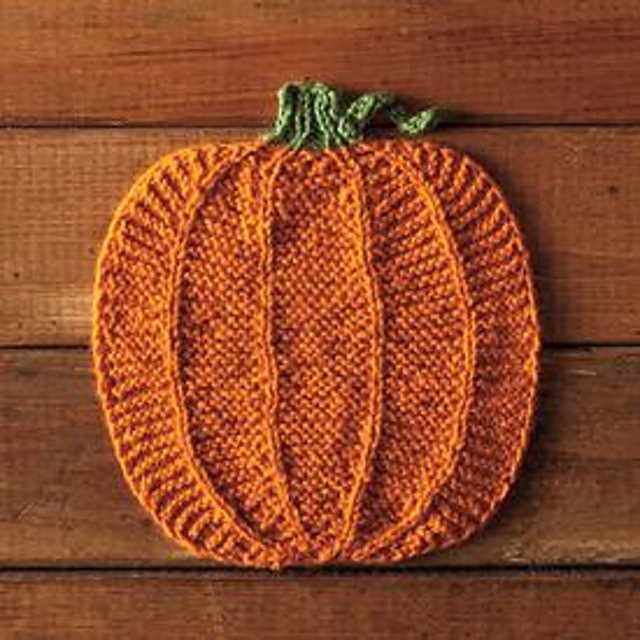
When it comes to knitted pumpkin dishcloths, there is a wide range of popular colors and designs to choose from. These dishcloths are not only practical for kitchen use, but they also add a festive touch to your home decor during the autumn season.
One of the most popular color choices for knitted pumpkin dishcloths is orange. This vibrant and warm color perfectly captures the essence of pumpkins and autumn. Knitting a pumpkin dishcloth in shades of orange can instantly bring an autumnal feel to your kitchen. You can choose to knit your dishcloth in a solid orange color or incorporate different shades of orange to create a variegated effect.
Classic Pumpkin Design
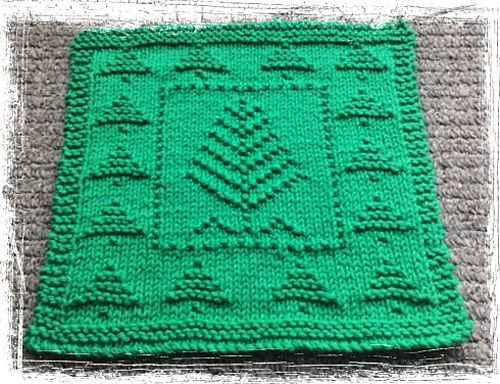
When it comes to designs, the classic pumpkin shape is always a favorite. A knitted pumpkin dishcloth in the shape of a traditional round pumpkin with a stem is a timeless choice. You can add extra details, such as ribbing or textured stitches, to create more dimension and interest in your dishcloth. For a fun twist, you can also experiment with different sizes of pumpkins or even knit a set of mini pumpkins.
Holiday-inspired Designs
In addition to the classic pumpkin design, many knitters also enjoy creating pumpkin dishcloths with holiday-inspired motifs. For example, you can knit a pumpkin dishcloth with a jack-o’-lantern face for Halloween or incorporate autumn leaves and acorns for Thanksgiving. These holiday-themed designs are eye-catching and add an extra festive touch to your kitchen decor.
Variegated and Striped Designs
If you’re looking for something more unique, you can try knitting pumpkin dishcloths in variegated or striped designs. Variegated yarns with shades of orange, yellow, and brown can create a stunning effect that mimics the colors of changing leaves. Striped designs, on the other hand, allow you to incorporate additional colors into your dishcloth, making it a versatile choice that can match a variety of kitchen decors.
Overall, knitted pumpkin dishcloths offer a fun and creative way to celebrate the autumn season. With the wide range of popular colors and designs available, you can easily find the perfect dishcloth pattern to suit your style and bring a seasonal touch to your home.
Knitting Techniques for Pumpkin Dishcloths
Knitting pumpkin dishcloths can be a fun and creative way to add a festive touch to your kitchen decor. Whether you’re an experienced knitter or just starting out, there are a few essential techniques that will help you create beautiful, textured pumpkin dishcloths.
Gauge: Before you begin knitting your pumpkin dishcloth, it’s important to check your gauge. The gauge refers to the number of stitches and rows per inch. By using the recommended needle size and yarn weight, you can ensure that your dishcloth will have the correct dimensions and texture.
Provisional Cast On: To give your pumpkin dishcloth a seamless and tidy edge, consider using a provisional cast on method. This technique allows you to easily remove the waste yarn later on, revealing a clean and finished edge.
Cables: Adding cables to your pumpkin dishcloth can give it a three-dimensional texture, resembling the ridges on a real pumpkin. To create cables, you’ll need to use a cable needle or a double-pointed needle to hold some stitches while you cross others over them. This technique may take a bit of practice, but the end result is worth it.
I-cord: The I-cord technique can be used to create the stem of your pumpkin dishcloth. This technique involves knitting a few stitches back and forth on double-pointed needles, creating a narrow tube. By attaching the I-cord to the top of your pumpkin, you can add a realistic touch to your dishcloth.
Finishing: Once you have completed all the knitting, it’s time to finish off your pumpkin dishcloth. This may involve weaving in loose ends, blocking the dishcloth to shape, or adding any additional embellishments, such as embroidered details or buttons.
By using these knitting techniques, you can create unique and beautiful pumpkin dishcloths that are perfect for adding a festive touch to your kitchen. Whether you’re decorating for Halloween or simply love the autumn season, these dishcloths are sure to impress.
Basic knitting stitches
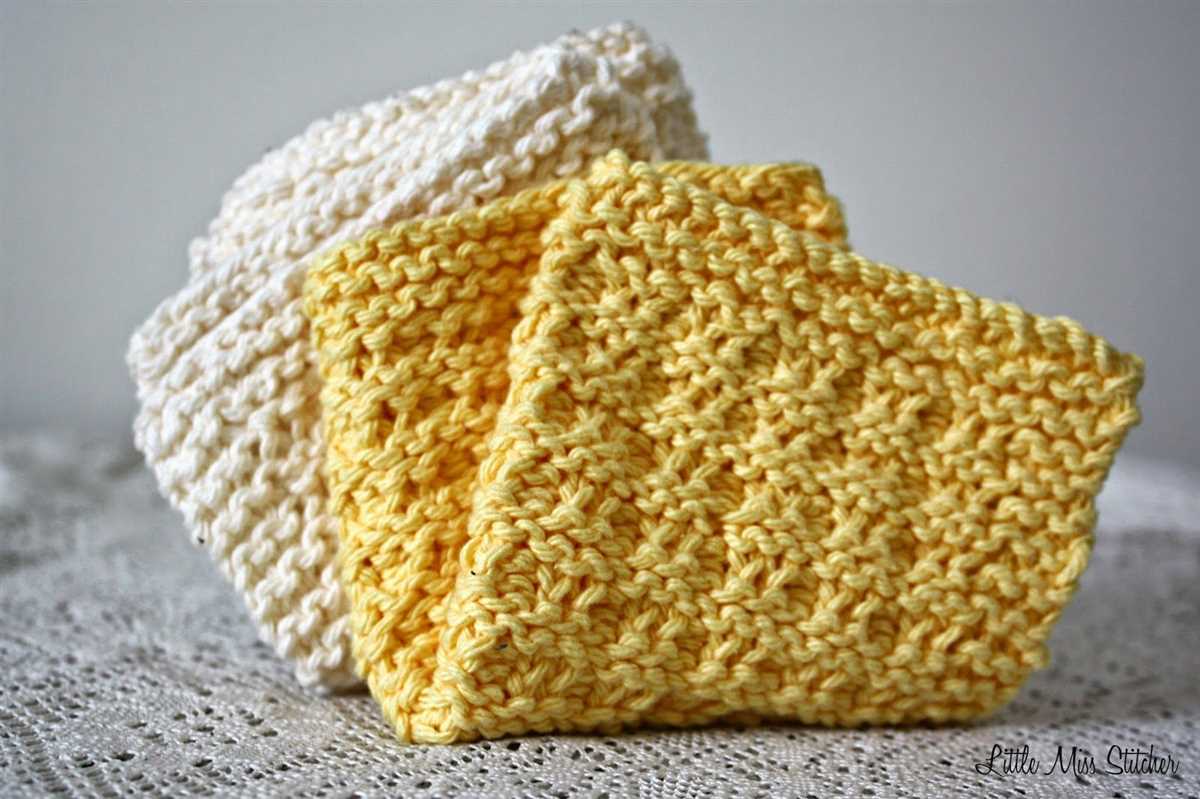
When it comes to knitting, there are a few basic stitches that every beginner should master. These stitches are the foundation of knitting and will be used in a variety of patterns and projects. Whether you’re knitting a cozy scarf, a warm sweater, or a cute dishcloth, knowing these stitches will make your knitting experience much smoother.
Garter stitch: The garter stitch is one of the easiest stitches to learn and is often the first stitch beginners are taught. It is created by knitting every stitch on every row, which creates a bumpy texture. This stitch is great for creating scarves, blankets, and dishcloths.
Stockinette stitch: The stockinette stitch is another basic stitch that is commonly used in knitting. It is created by alternating knit rows and purl rows. This stitch creates a smooth, V-shaped pattern on one side (the right side) and a bumpy texture on the other side (the wrong side). It is often used in knitting garments like sweaters and hats.
Note: These are just a few examples of basic knitting stitches. There are many other stitches and stitch patterns to explore as you advance in your knitting skills. However, mastering these foundational stitches will give you a solid base to start your knitting journey.
Advanced Knitting Techniques
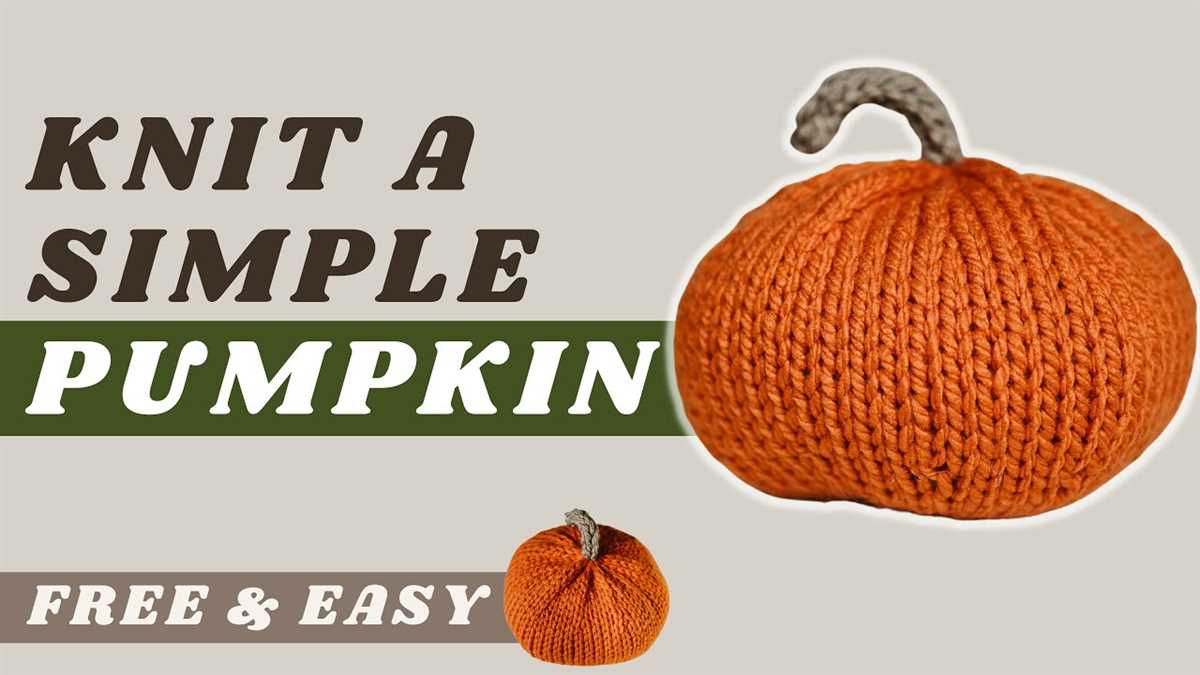
Mastering advanced knitting techniques can elevate your knitting projects to a new level. These techniques require some additional skills and practice, but they can help you create intricate patterns and textures in your knitted pieces.
1. Cable Knitting:
Cable knitting is a popular advanced technique that involves crossing stitches to create beautiful cable patterns. By using a cable needle or a technique called “cabling without a cable needle,” you can add depth and complexity to your knitting. Cable knitting patterns can range from simple twists to intricate braids, offering endless possibilities for creating unique designs.
2. Lace Knitting:
Lace knitting involves creating delicate openwork patterns by strategically increasing and decreasing stitches. This technique is often used to create airy shawls, intricate doilies, or elegant garments. Lace knitting requires attention to detail and following complex stitch patterns, which may include yarn overs, decreases, and intricate motifs.
3. Fair Isle Knitting:
Fair Isle knitting, also known as stranded knitting, is a traditional technique that originated in the Fair Isle of Scotland. It involves working with multiple colors in a row to create intricate patterns. By carrying two colors of yarn along each row, you can create colorful motifs and designs. Fair Isle knitting requires precision in tension control and colorwork techniques to achieve even stitching and avoid bunching.
4. Intarsia Knitting:
Intarsia knitting is a technique used to create blocks of color within a knitted fabric. Instead of carrying different colors along each row like in Fair Isle knitting, intarsia requires using separate balls or bobbins of yarn for each color block. This technique is often used for creating detailed pictures or geometric patterns in garments, blankets, or accessories.
5. Double-Knitting:
Double-knitting is a technique that creates a reversible two-layer fabric with different colors or patterns on each side. By simultaneously working with two separate strands of yarn, you can create a fabric that is thick, warm, and completely reversible. This technique is often used for creating reversible scarves, hats, or blankets.
These advanced knitting techniques offer knitters the opportunity to challenge themselves and expand their skills. By mastering these techniques, you can create unique and stunning knitted pieces that showcase your knitting prowess.
How to Choose the Right Yarn for Pumpkin Dishcloths
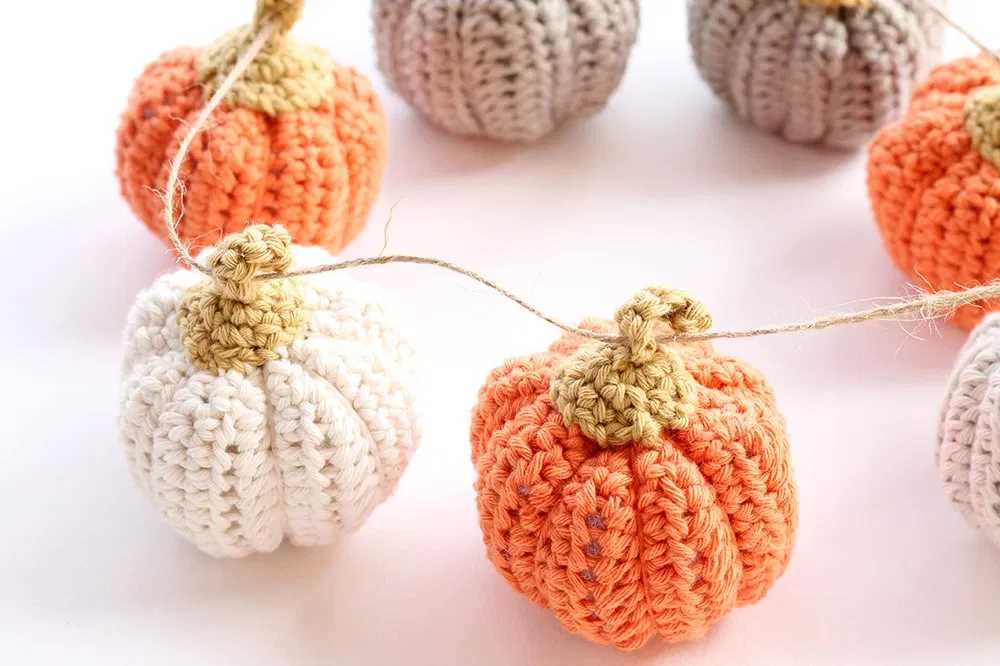
When it comes to knitting pumpkin dishcloths, choosing the right yarn is essential. The right yarn can make a huge difference in the look and feel of your finished project. Here are some factors to consider when selecting yarn for your pumpkin dishcloths:
1. Durability:
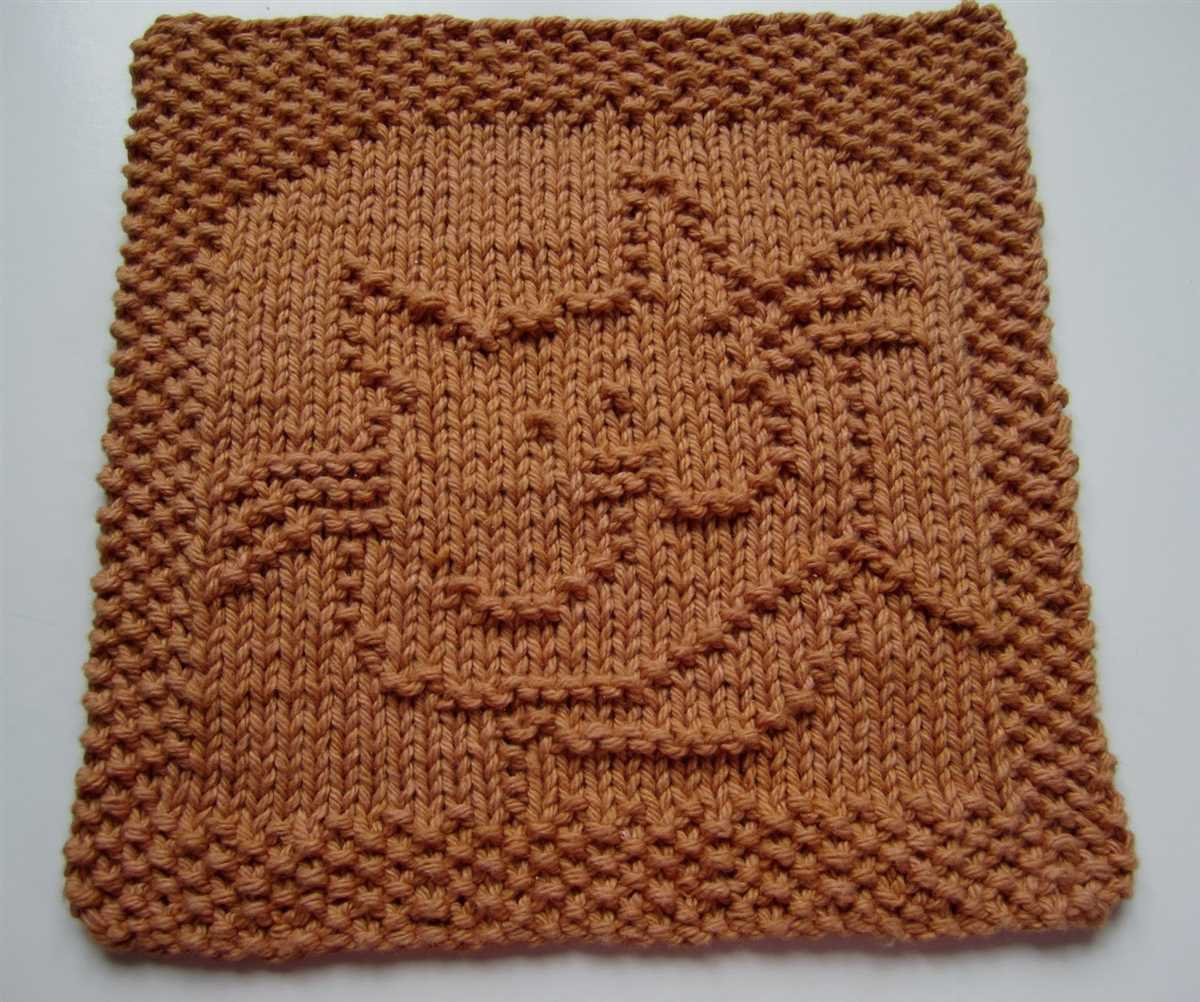
Since dishcloths are meant to be used for cleaning, it is important to choose a yarn that is durable and can withstand regular wear and tear. Look for yarns that are labeled as “washable” or “easy-care” to ensure that your pumpkin dishcloths can be easily cleaned without losing their shape or color.
2. Absorbency:
Pumpkin dishcloths are typically used for wiping up spills and messes in the kitchen, so it is important to choose a yarn that is absorbent. Natural fibers such as cotton or bamboo are great options as they are known for their absorbency. Avoid using synthetic yarns that may not absorb liquids effectively.
3. Texture:
Consider the texture of the yarn when choosing the right one for your pumpkin dishcloths. Textured yarns can add a decorative element to your dishcloths, mimicking the texture of a real pumpkin. You can choose yarns with a slight nubby texture or opt for ones with a more pronounced texture for a visually interesting dishcloth.
4. Color:
When it comes to pumpkin dishcloths, the color of the yarn is an important consideration. Traditional pumpkin colors such as orange, yellow, and green can give your dishcloths a festive and seasonal touch. However, you can also experiment with other colors to create unique and creative pumpkin designs.
In conclusion, choosing the right yarn for your pumpkin dishcloths involves considering factors such as durability, absorbency, texture, and color. By paying attention to these factors, you can ensure that your knitted dishcloths not only look great but also serve their purpose effectively in the kitchen.
Essential tools for knitting pumpkin dishcloths
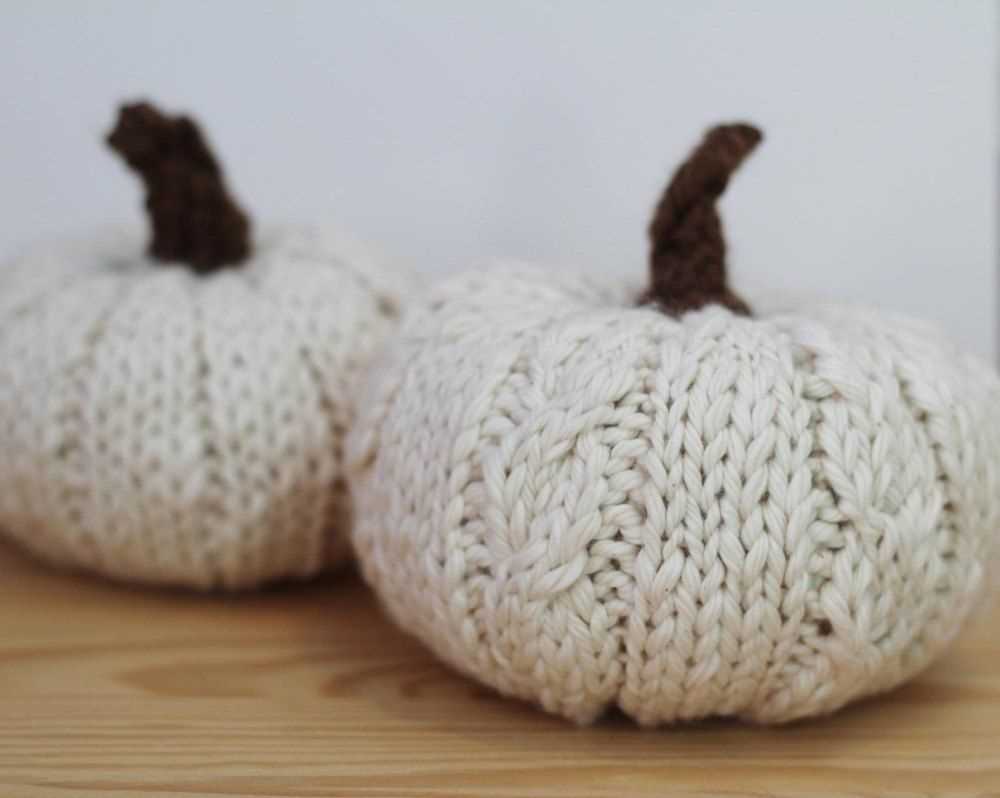
Before you begin knitting your pumpkin dishcloth, make sure you have all the necessary tools at hand. Here are the essential items you’ll need:
- Knitting Needles: Choose a pair of knitting needles that are suitable for your yarn weight and desired gauge. For most dishcloth patterns, size 7 or 8 needles work well.
- Yarn: Use a durable, absorbent cotton yarn for your dishcloth. Worsted weight cotton yarn is a popular choice.
- Tapestry Needle: A tapestry needle with a large eye is essential for weaving in ends and sewing up any seams.
- Scissors: A pair of sharp scissors will come in handy for cutting yarn and trimming any excess.
- Stitch Markers: Stitch markers can help you keep track of your stitches and pattern repeats, particularly if you’re working with a complex pattern.
- Measuring Tape: A measuring tape or ruler is essential for checking your gauge and ensuring your dishcloth will be the correct size.
Conclusion:
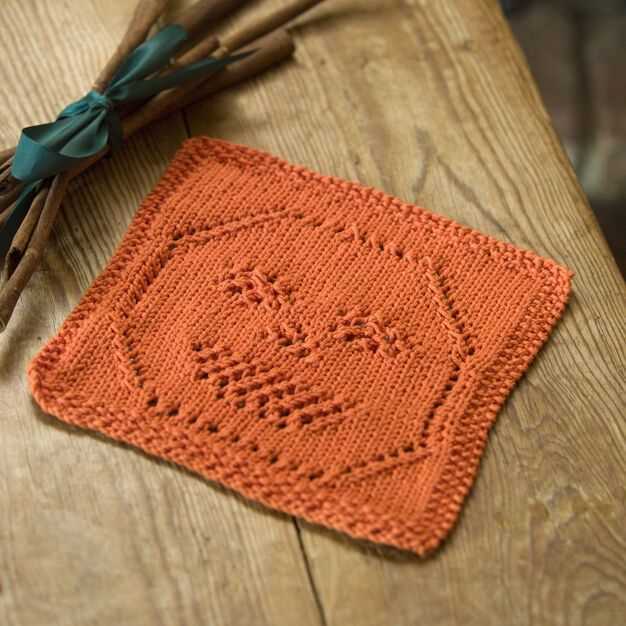
Having the right tools is important for a successful knitting project, and knitting pumpkin dishcloths is no exception. With your knitting needles, yarn, tapestry needle, scissors, stitch markers, and measuring tape, you’ll be well-prepared to knit beautiful and functional pumpkin dishcloths. So gather your supplies, choose a pattern, and get knitting!